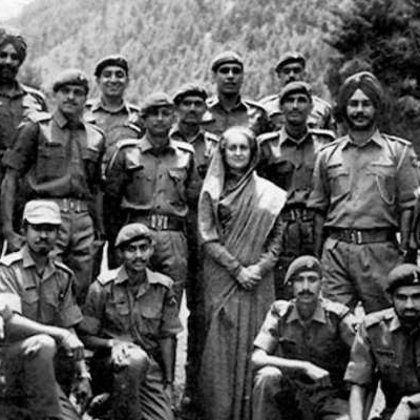INDIA - PAKISTAN CONFLICTS ,THE CONFLICT BETWEEN INDIA AND PAKISTAN HAS A LONG HISTORY ,AND THEIR FIRST ARMED CLASH OCCURRED IMMEDIATELY AFTER THEIR INDEPENDENT IN 1947 .FOLLOWED BY ANOTHER AND LARGER CONFLICT IN 1965 MAINLY OVER KASHMIR .AS KASHMIR REMAINS A FLASHPOINT BETWEEN INDIA AND PAKISTAN.
India and Pakistan gained their independence in 1947 and all the princely states had to choose between the two countries. Hari Singh, the Maharaja of Kashmir, did not want to decide on either. He signed an interim agreement with Pakistan to continue transport services. However, afraid of losing his power in wake of an invasion by tribesmen from Pakistan, he signed the Instrument of Accession to India in October 1947.The partition of the Indian sub-continent along religious lines led to the formation of India and Pakistan. However, there remained the problem of over 650 states, run by princes, existing within the two newly independent countries.In theory, these princely states had the option of deciding which country to join, or of remaining independent. In practice, the restive population of each province proved decisive.The people had been fighting for freedom from British rule, and with their struggle about to bear fruit they were not willing to let the princes fill the vacuum.Although many princes wanted to be "independent" (which would have meant hereditary monarchies and no hope for democracy) they had to succumb to their people's protests which turned violent in many provinces.Because of its location, Kashmir could choose to join either India or Pakistan. Maharaja Hari Singh, the ruler of Kashmir, was Hindu while most of his subjects were Muslim. Unable to decide which nation Kashmir should join, Hari Singh chose to remain neutral.But his hopes of remaining independent were dashed in October 1947, as Pakistan sent in Muslim tribesmen who were knocking at the gates of the capital Srinagar.Hari Singh appealed to the Indian government for military assistance and fled to India. He signed the Instrument of Accession, ceding Kashmir to India on October 26.Indian and Pakistani forces thus fought their first war over Kashmir in 1947-48. India referred the dispute to the United Nations on 1 January. In a resolution dated August 13, 1948, the UN asked Pakistan to remove its troops, after which India was also to withdraw the bulk of its forces.Once this happened, a "free and fair" plebiscite was to be held to allow the Kashmiri people to decide their future.India, having taken the issue to the UN, was confident of winning a plebiscite, since the most influential Kashmiri mass leader, Sheikh Abdullah, was firmly on its side. An emergency government was formed on October 30, 1948 with Sheikh Abdullah as the Prime Minister.Pakistan ignored the UN mandate and continued fighting, holding on to the portion of Kashmir under its control. On January 1, 1949, a ceasefire was agreed, with 65 per cent of the territory under Indian control and the remainder with Pakistan.The ceasefire was intended to be temporary but the Line of Control remains the de facto border between the two countries.In 1957, Kashmir was formally incorporated into the Indian Union. It was granted a special status under Article 370 of India's constitution, which ensures, among other things, that non-Kashmiri Indians cannot buy property there.Fighting broke out again in 1965, but a ceasefire was established that September. Indian Prime Minister, Lal Bhadur Shastri, and Pakistani President, M Ayub Khan, signed the Tashkent agreement on January 1, 1966.They resolved to try to end the dispute, but the death of Mr Shastri and the rise of Gen Yahya Khan in Pakistan resulted in stalemate.In 1971a third war, resulting in the formation of the independent nation of Bangladesh (formerly known as East Pakistan). A war had broken out in East Pakistan in March 1971, and soon India was faced with a million refugees.India declared war on December 3, 1971 after Pakistani Air Force planes struck Indian airfields in the Western sector.Two weeks later, the Indian army marched into Dhaka and the Pakistanis surrendered. In the Western sector the Indians managed to blockade the port city of Karachi and were 50 km into Pakistani territory when a ceasefire was reached.In 1972 Indira Gandhi, the Indian prime minister, and Zulfikar Ali Bhutto, her Pakistani opposite number (and father of Benazir Bhutto, a later Pakistani premier), signed the Simla Agreement, which reiterated the promises made in Tashkent.The two sides once again agreed to resolve the issue peacefully, as domestic issues dominated.Both India and Pakistan had other important domestic problems which kept Kashmir on the back-burner. In 1975 Indira Gandhi declared a state of national emergency, but she was defeated in the 1978 general elections.Zulfikar Ali Bhutto was overthrown and hanged in 1977; Pakistan reverted to military dictatorship under Gen Zia ul Haq.The balance of influence had decisively tilted in Pakistan's favour by the late 1980s, with people's sympathy no longer with the Indian union as it had been in 1947-48 and 1965.Mrs Gandhi's attempts to install puppet governments in state capitals, manipulating the democratic process in the state legislatures, deeply angered the Kashmiris.The status quo was largely maintained until 1989 when pro-independence and pro-Pakistan guerrillas struck in the Indian Kashmir valley. They established a reign of terror and drove out almost all the Hindus from the valley before the Indian army moved in to flush them out. Meanwhile Indian and Pakistani troops regularly exchanged fire at the border.
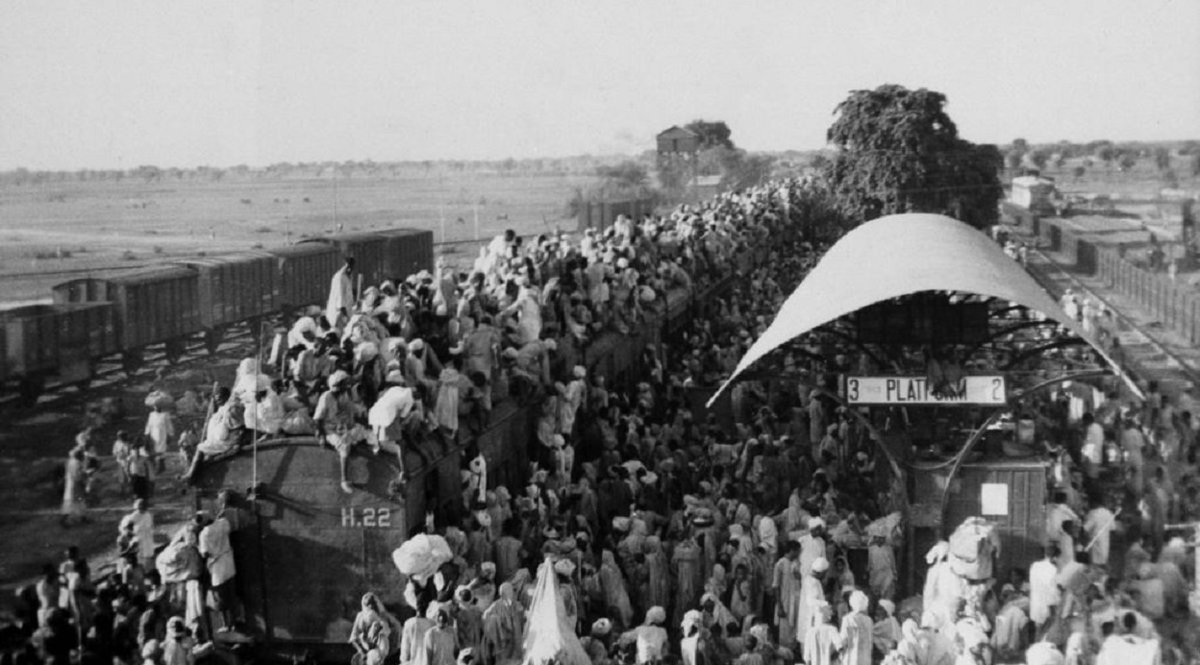
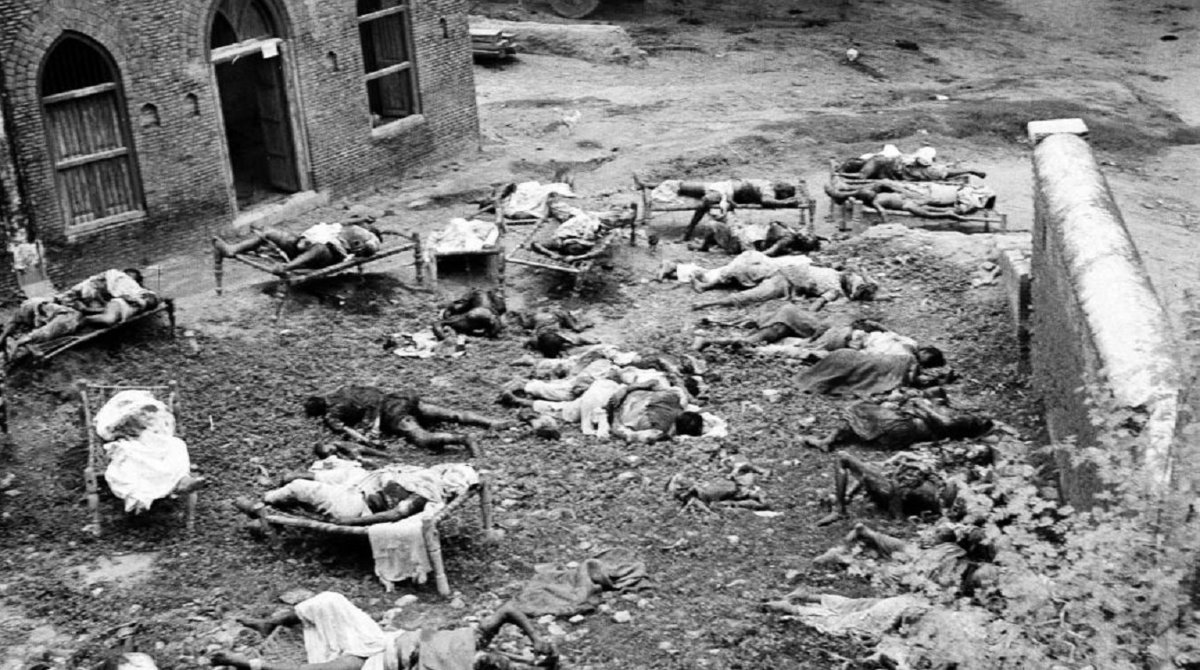 As Muslims flooded west and east to the newly formed Islamic "homelands" of today’s Pakistan and Bangladesh, Hindus and Sikhs moved in the opposite directions.In the chaos, mobs attacked their religious counterparts in violence that killed hundreds of thousands and shocked the world.In 1947 Kashmir had a mostly Muslim population but a Hindu ruler. Maharajah Hari Singh needed to decide if his region would join India, Pakistan, or become an independent state.
As Muslims flooded west and east to the newly formed Islamic "homelands" of today’s Pakistan and Bangladesh, Hindus and Sikhs moved in the opposite directions.In the chaos, mobs attacked their religious counterparts in violence that killed hundreds of thousands and shocked the world.In 1947 Kashmir had a mostly Muslim population but a Hindu ruler. Maharajah Hari Singh needed to decide if his region would join India, Pakistan, or become an independent state.This led to more unrest and the United Nations had to intervene to negotiate a cease-fire. All troops were withdrawn and a line of control was mutually agreed upon between India and Pakistan in January 1949.The Kashmir conflict resumed in the India-Pakistan War of 1965. The Pakistani army tried to take Kashmir by force but failed. The Security Council passed a resolution to put an end to the fighting and ban arms supplies to both parties.The Shimla Agreement was signed between India and Pakistan in 1972 to bring peace between the two countries after the Bangladesh Independence War. Another line of control was established between Indian-controlled Kashmir and Pakistan-controlled Kashmir.A very interesting point among the 10 facts about the Kashmir conflict is that China also claims control over 20 percent of Kashmir, namely the northeastern part of the region called the Aksai Chin.Tens of thousands have been killed by Islamic militants in Indian-controlled Kashmir since 1989, said to be a result of parliamentary elections held by the Indian government. In response, India imposed direct rule in 1990, which worsened the situation, resulting in violent attacks on Hindu residents. 100,000 Kashmiri Hindus (Pandits) fled the valley, fearing for their lives.After years of relative peace, tensions were reignited when armed militants attacked the Indian army base in Uri, killing 18 soldiers. India responded by blaming Pakistan, while Pakistan blamed India for the unrest in the region.Whereas in 1948 India took the Kashmir issue to the UN and was all for a plebiscite, by the 1990s it hid behind the Simla agreement and thwarted any attempts at UN or third-party mediation.Over the decades the plebiscite advocated by India's great statesman Jawaharlal Nehru became a dirty word in New Delhi. These developments have led many to believe that Delhi has squandered the Kashmiri people's trust and allegiance.India and Pakistan both tested nuclear devices in May 1998, and then in April 1999 test-fired missiles in efforts to perfect delivery systems for their nuclear weapons. Pakistan tested its Ghauri II missile four days after India's testing of its long-range (1,250 km) Agni II.Although Pakistan claims that its missiles are an indigenous effort, in July 1999 Indian customs agents seized components shipped from North Korea which they claim were destined for Pakistan's missile programme.Pakistan's later intermediate-range Ghauri III missile has a range of about 3,000 km.When the Indian Prime Minister, Atal Behari Vajpayee, set out to Lahore by bus on February 20, 1999, inaugurating the four times a week Delhi-Lahore-Delhi bus service, the world felt that such a genuine effort at friendly neighbourhood relations would lower the tension along the Line of Control in Kashmir.But, all hopes of diplomacy disappeared once the cross-LOC firing in Kargil began during the mid-1990s. The death toll , including both soldiers and civilians, was more than 30,000.In the first week of August 1998 Indian and Pakistani troops exchanged artillery fire, described by locals as heavier than that of the 1948 and 1965 wars put together. An estimated 50,000 rounds of ammunition were expended and a large number of soldiers and civilians killed.In the summer of 1999 hostility in Kargil went far beyond the now familiar annual exhange of artillery fire.When India began patrolling the Kargil heights that summer, it found to its horror that many key posts vacated in the winter were occupied by infiltrators. A patrol was ambushed in the first week of May 1999. India belatedly realised the magnitude of the occupation - which was around 10 km deep and spanned almost 100 km of the LOC - and sent MiG fighters into action on May 26.India contended that the infiltrators were trained and armed by Pakistan, and based in "Azad Kashmir" with the full knowledge of the Pakistani government - and that Afghan and other foreign mercenaries accompanied them.Pakistan insisted that those involved were freedom fighters from Kashmir and that it was giving only moral support.India ordered the jets not to stray into Pakistani territory; but those that did were shot down.The conflict ended only after Bill Clinton, the US President, and Nawaz Sharif, Pakistan's Prime minister, met in Washington on July 4, 1999.Meanwhile, the Indian Army had made significant advances, capturing vital territory on July 4. Despite the apparent efforts to mediate, the US maintained that it was not interfering in what India still claims to be a bilateral issue.Pakistan withdrew its forces later that month. However, skirmishing continued, and in August India shot down a Pakistani reconnaissance plane, killing 16.The official number of Indian troops lost in Kargil was around 500, with almost double that number of "infiltrators" killed. Nevertheless, India did not declare war against Pakistan - instead, Mr Vajpayee ambigously announced a "war-like situation".Yet this, by all accounts of soldiers and top Indian army officers involved, was a war in which India lost men engaged in hand-to-hand combat with Pakistani soldiers in the heights of Kargil - a war that could be compared with the one of 1948-49, which was limited to Kashmir, with the other border regions remaining peaceful.Thus in 1999, in a war limited to one sector, India suffered casualities within its own territory. Despite much pressure from the military and the public, the government decided not to cross the LOC. Pakistan too suffered criticism at home for limiting its war to artillery fire across the LOC and shooting down Indian aircraft.The fear of a full-scale war (with nuclear capability adding a deadly dimension), coupled with precarious economies and the knowledge of what international sanctions could do to them, may have prevailed in both countries.
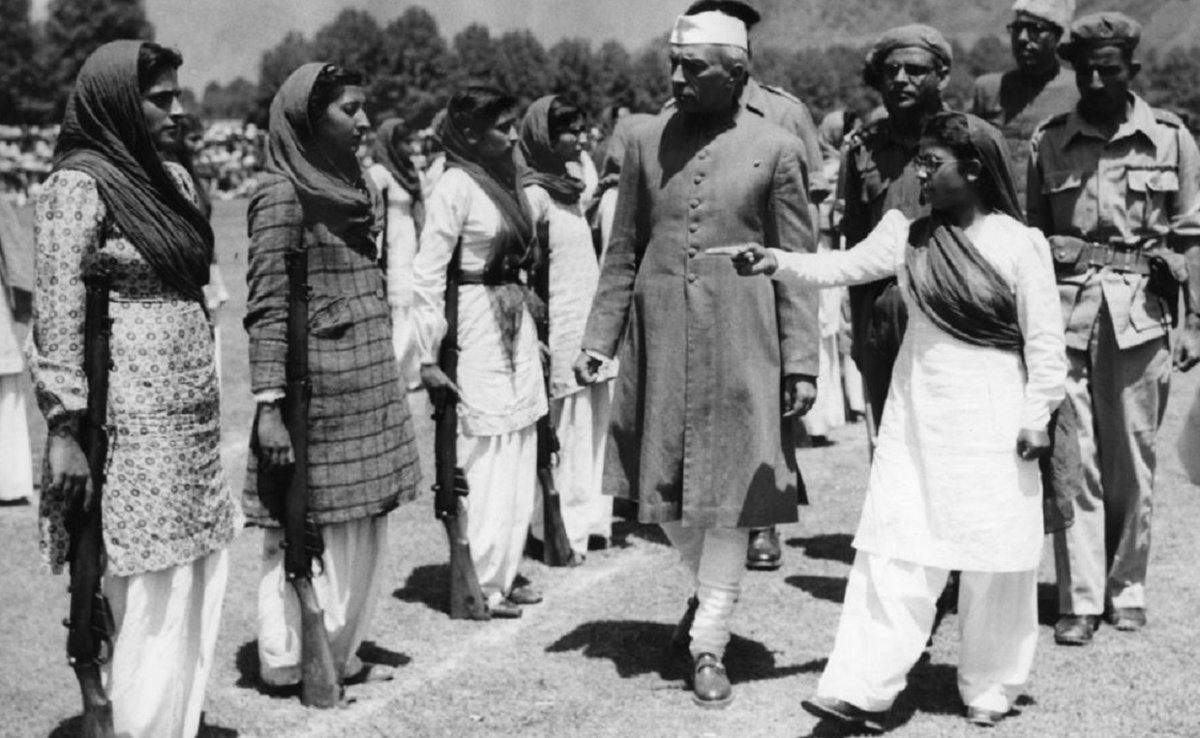 Female fighters being inspected by Indian Prime Minister Jawaharlal Nehru in Kashmir in 1947. Many argue that Maharajah Singh had left the region before signing the accession and therefore had no right to declare Jammu and Kashmir's union with India.As the maharajah wavered, violent uprisings broke out and tribal militants sent from Pakistan infiltrated the region in a bid to seize it by force.
Female fighters being inspected by Indian Prime Minister Jawaharlal Nehru in Kashmir in 1947. Many argue that Maharajah Singh had left the region before signing the accession and therefore had no right to declare Jammu and Kashmir's union with India.As the maharajah wavered, violent uprisings broke out and tribal militants sent from Pakistan infiltrated the region in a bid to seize it by force.
On 16 December 1971 shortly after Pakistani forces surrendered to the Indian Army in East Pakistan Prime Minister Indira Gandhi called a large meeting in the Cabinet Room, in the South Block of the Secretariat Building that housed her offices. Those present included the defence, foreign, finance and home ministers all the senior members of the cabinet committee on security as well as their secretaries, the chiefs of all three armed services, the head of the Research and Analysis Wing, and the cabinet secretary. Also in attendance were four of the prime minister’s closest advisers PN Haksar, her principal secretary, PN Dhar, her secretary, G Parthasarathi, my father, then formally serving as the vice chancellor of Jawaharlal Nehru University, and myself, her science and technology adviser.Forty-eight years ago, when a full-scale war started between India and Pakistan, opposition parties united behind the then prime minister, Indira Gandhi.In 1971, Lok Sabha members, cutting across party lines, thumped tables and threw papers in the air shouting slogans of “Joi Bangla, Joi Indira Gandhi (Long live Bangladesh, long live Indira Gandhi)"; PM Gandhi received a standing ovation in the Lower House following the unconditional surrender by Pakistan in December 1971.This was just eight months after Gandhi defeated a united opposition in the general elections held in March.Other news reports from the period highlight that the opposition was united about the fact that the attack on an Indian airfield had created a situation of national emergency.The prime minister must now lead the country to total victory over enemy. If government wanted to secure any more powers to handle the situation, this party would not hesitate to accord its fullest cooperation," said Atal Bihari Vajpayee, as the president of the Jan Sangh, the leading opposition party that later evolved into the Bharatiya Janata Party (BJP).Communist parties including the feuding CPI, which was allied with the Congress, and the CPI(M), which was slowly emerging after its split with the CPI, also pledged support to the government. Swatantra Party, which was founded by C. Rajagopalachari, who had split from the Jawaharlal Nehru-led Congress, also extended support, along with regional parties including the DMK. As India and Pakistan remained locked in battle for 13 days, Gandhi remained resolute in her support to Bangladesh, despite US attempts to force India to commit to a ceasefire.Opposition leaders, including Vajpayee in the Lok Sabha and S.N. Mishra in the Rajya Sabha, condemned then US president Richard Nixon’s “anti-India statements" in Parliament. Other Jan Sangh leaders including L.K. Advani, Balraj Madhok and Kidar Nath Sahani led demonstrations outside the US Embassy.The CPI and other regional parties including the DMK also staged protests against the US.The discourse between political parties has deteriorated. It’s important to note that 1971 was a clear war-like situation between two countries, unlike the present conflict, and there are other dominant factors at play, including action against terrorism and dominating media narrativ.Interestingly, even when the issue of postponing assembly elections was brought up in 1971, Jan Sangh leader Vajpayee and Swatantra Party leader P.K. Deo, had “strongly supported" the prime minister and maintained that the extension should be for one year, while CPM leaders wanted elections to be held within three months.It was only after ceasefire was declared that the opposition chose to express its dissent with the government’s decision to declare a ceasefire. The major dissenting voice emerged from Jan Sangh president Vajpayee, who said he did not fully agree with the decision for a unilateral ceasefire and wanted discussion on the issue in Parliament.1971 war: The story of India's victory, Pak's surrender, Bangladesh freedom.The Indian Army brought Pakistani army to its knees, took 93,000 Pakistani prisoners and gave 75 million people of Bangladesh their independence.December 16 is a significant day for India and its neighbours Bangladesh and Pakistan. In 1971, India won the war against Pakistan that resulted in the birth of Bangladesh (then East Pakistan). On this day 47 years ago, Pakistan lost half its country, its forces in the East, and had to publicly surrender to India.It was also the largest military surrender after World War II. The war started when Pakistan launched air strikes on 11 Indian airbases. It was perhaps the first time in which India's all three forces fought in unison. India quickly responded to Pakistan.The partition of 1947 and the splitting apart of Pakistan in 1971 were accompanied by much loss of life and enormous population movements, as refugees fled violence or ethnic conflict. India fought Pakistan twice in Kashmir, in 1947-8 and 1965, and China in the Himalayas in 1962. Stable and democratic government proved elusive outside India, the region experiencing a succession of coups: in Pakistan in 1958 and 1977, in Afghanistan in 1973, 1978 and 1979, and in Bangladesh in 1975; democracy underwent a flowering and then a withering in Nepal, where King Mahendra established a partyless autocracy in 1959. Even in India, which had successfully established a democratic, secular state at independence, the government of India Gandhi became increasingly authoritarian and intolerant of dissent in the 1970s, imprisoning hundreds of opponents.From the perspectives of the Cold War superpowers of the era, South Asia was a decisive military and ideological battleground. Britain maintained naval bases in Ceylon after its independence and established a significant RAF presence in the Maldives; in 1971 an American airbase was set up on the British island of Diego Garcia. Pakistan became a significant ally of the United States, which supplied arms and military technology; it also joined CENTO, an alliance intended to stop Soviet expansion into the Middle East. In contrast, India under Nehru followed a neutral course, being instrumental in the founding of the Non-Aligned Movement, until it was forced to look to western aid when faced with a hostile China. The 1970s also saw both India and Pakistan develop nuclear weapons.
On May 11, 1998 at Pokhran, a desert site in the Indian state of Rajisthan, groups of local Bishnoi herders—whose customs forbid killing animals or cutting trees heard a huge explosion, and watched in amazement as an enormous dust cloud floated in the sky. What the Indian farmers did not realize, but the diplomats in Washington and around the world soon grasped, was the fact that India had just joined the United States, Russia, England, France and China as the newest member of the nuclear club. On that warm May afternoon, Indian nuclear scientists successfully exploded three atomic devices amounting to about six times the destructive power of the American bomb dropped on Hiroshima in 1945. The next day, as the world tried to absorb the frightening news, India ignited two more nuclear explosions.Even as ninety percent of Indians applauded then-Prime Minister Vajpayee's decision to go nuclear, then-U.S. President Clinton immediately reacted to the explosions with shock and criticized India's nuclear testing. The American President argued that India’s actions violated the Comprehensive Test Ban Treaty endorsed by 149 nations and the 1970 non-proliferation treaty signed by 185 nations. Despite the fact that neither India nor Pakistan has signed the treaties, the President, citing the 1994 Nuclear Proliferation Prevention Act, immediately called for economic sanctions against India including cutting off $40 million in economic and military aid, and all American bank loans. The President also asked the International Monetary Fund and World Bank to cancel all new loans which could cost India around $14.5 billion worth of public projects, including a major modernization of India's often failing electrical system. Moreover, Japan and other industrial nations soon followed the U.S. example and froze on-going projects in India worth over a billion dollars in aid.As the five nuclear powers, all permanent members of the United Nations Security Council, discussed ways to punish India as well as ways to prevent Pakistan from testing its own nuclear devices, the leaders of Pakistan were busily moving forward with their own nuclear plans.On May 28th, Nawaz Sharif, Pakistan's prime minister at that time, announced that following India's lead, Pakistan had successfully exploded five "nuclear devices." Not content to equal India's five tests, Pakistan proceeded on May 30th to explode yet a sixth device and at the same time the Prime Minister announced that his government would soon be able to launch nuclear war heads on missiles.Both President Clinton and a majority of the world community condemned Pakistan's nuclear testing, although China was much less harsh in its criticism of Pakistan, its close ally. Following the sanctions policy after India's tests, the United States, Japan, Britain, Canada and Germany ended their aid to Pakistan and asked the International Monetary Fund (IMF) and World Bank to place a moratorium on loans to Pakistan. However, despite President Clinton's wish to impose a world-wide system of economic sanctions on India and Pakistan, a vast majority of western nations have refused to join the effort.Despite the seeming suddenness of India's and Pakistan's decisions to test nuclear devices and in so doing seek to join the other five world nuclear nations, the headlines following the explosions "heard round the world," had a fifty-year history.Since their independence as new nations in 1947, India and Pakistan have followed a path of mutual animosity. Pakistan was created as a national homeland for the Muslim-majority areas of the subcontinent, while India proposed to become a secular nation that included about 85 percent Hindus, but also more than ten percent Muslims as well as large numbers of Sikhs, Christians and members of other religions.Soon after the partition of the sub-continent into the two nations, about 17 million people fled their homes and journeyed to either Pakistan or India. In one of the largest exchanges of populations in history, violence soon broke out with Muslims on one side and Sikhs and Hindus on the other. The resulting blood shed in the Punjab and West Bengal regions left more than one million people dead in its wake.In the midst of this refugee movement and open violence, the governments of India and Pakistan hastily tried to divide the assets of British India between the two new countries. From weapons and money, down to paper clips and archaeological treasures, all had to be divided.The British had left behind, besides about half of the subcontinent that it directly governed, some 562 independent or "princely" states. The provision was that each state could remain independent, join Pakistan or accede to India. A violent competition soon resulted as the two new nations sought to win to their own nations the largest and most strategically located states, such as Hyderabad and Kashmir. Because Kashmir was more than 70% Muslim, Pakistan insisted that a vote be taken in the state. However, India argued, since the Maharaja of Kashmir was Hindu, he had right to take the state into India. Even as independence was being celebrated, India and Pakistan began a covert war in Kashmir and the struggle for that state still goes on today.In 1947, 1965 and 1971 India and Pakistan fought wars that did not change the status of Kashmir, but did result in the 1971 further partition of West and East Pakistan into the two nations of Pakistan and Bangladesh.Not only did the architects of Indian foreign policy fear Pakistan, but in 1962, after China's sudden invasion of northeast India, they suddenly realized the ancient protection of the Himalayan Mountains had vanished. India now would have to build sufficient military power to protect itself from both Pakistan and China, the largest country in the world and a major military power armed with nuclear weapons.Soon after the China war of 1962, Indian scientists began developing its nuclear capability. Under Indira Gandhi's Prime Ministership in 1974, India successfully exploded a nuclear device, announcing to the world its scientific capacity to develop nuclear bombs.Because of the strong world opinion against nuclear testing, India did not undertake additional nuclear testing until May, 1998. However, this fourteen-year moratorium on nuclear testing did not mean Indian scientists and political leaders were not planning to join the nuclear club.Although Prime Minister Rajiv Gandhi reversed his mother's policy of nuclear development, when a new prime minister Narasimha Rao assumed power in 1991, India resumed its plans for nuclear development and in December, 1995, Rao was ready to authorize a nuclear test--only to be discovered by CIA spy satellite and discouraged by President Clinton from going forward with the tests. With the election of the Hindu Nationalist, Bharata Janata Party in 1998, Prime Minister Atal Vajpayee ordered Indian scientists to proceed with plans for testing as soon as possible. This lead to the series of detonations in May, and the subsequent quick response by Pakistan.The United States has treaties which provide nuclear umbrella to Japan and NATO nations. At present, the United States has cordial relations with China. American policy is worked out in tension between those who insist on expanded human rights in China, and those who favor opening markets and investments in China and downplaying human rights issues. The United States was closely allied with Pakistan until end of Cold War. Pakistan provided bases for U-2 flights and conduit for arms to Afghanistan rebels. The United States provided most of Pakistani military aid from 1954 to the 1980s. China is now the major military supplier to Pakistan. The United States has maintained cool relations with India because of its refusal to join the west during the Cold War, its pursuit of a non-alignment foreign policy and for its tight controls on American investment and business enterprise in India.China is the premier military power in Asia and considers Pakistan its oldest and most powerful Asian ally. China continues to occupy areas inside of India's borders as a result of the Indo-China war of 1962. China has nuclear-armed missiles positioned against India along the Himalayan border and in Tibet, in addition to being Pakistan’s main military weapons provider.Russia has had close relations with India since Indira Gandhi became prime minister in 1966. Russia provides most of India's military sales. After the demise of the Soviet Empire, Russia is unable to provide economic or military aid to India.India has pursued a policy of non-alignment with Soviet Union and United States since its independence. India's planned economy was not open to U.S. investment until change of policy toward free market in 1991. India would not accept American military aid or join alliances, thus alienating U.S. leaders and majority of Americans. Under President Kennedy, the United States supported India in its war with China. Under Nixon, the United States supported Pakistan in 1971 in the war that led to creation of Bangladesh (the former East Pakistan). America sent a nuclear-armed aircraft carrier to Bay of Bengal, which helped motivate India to go nuclear. Now that Russia is weak, India feels isolated and alone in world community. India has felt that the United States has also been hostile to India and that we now are promoting China as the major power in all of Asia. Pakistani testing of Gauri missile on April 6th, 1998 was a major factor in India's decision to undertake nuclear testing. India will suffer from the end of economic aid, but its leaders have calculated that that the nation can survive the sanctions.Pakistan relied on its close alliance with the United States from 1954 through the 1980s. During the 1990s, leaders looked more to China for support and military technology and hardware; China is currently a major supplier of these components to Pakistan. The Pakistani foreign minister traveled to China for consultations ten days before Pakistan conducted nuclear tests. Pakistan will suffer far more than India as a result of economic sanctions by world community. Loss of aid will result in undermining of currency, great increase in debt and increase in poverty.In the hunt for Osama bin Laden in Afghanistan and Pakistan in early 2002, U.S. relations with Pakistan and its leader, President General Pervez Musharraf, improved, which further aggravated India-Pakistan relations. While economic sanctions were lifted, Pakistani militants staged several attacks and bombings; in one occassion, targeted Indian and Kashmiri legislatures. The United Nations discussed the Indo-Pakistan conflict from December 4 to 6, and all resolutions submitted to the Security Council were rejected because of the violent clash of interests and expectations of the three great powers of the United States, China and the Soviet Union. It was impossible to adjust the views of the three permanent Security Council members on the problem, and a Security Council resolution dated December 6 decided to refer the matter to the General Assembly for discussion. In accordance with the resolution, the General Assembly debated the Indo-Pakistan conflict on December 7, and a resolution jointly sponsored by 33 countries, including Japan, was adopted by majority vote. However, no effective measure to settle the armed conflict between Indian and Pakistani forces could be taken, and a cease-fire was brought about in the form of a victory for the Indian forces.The Indo-Pakistan problem at the beginning, and showed little sympathy toward East Pakistan, when the West Pakistani forces suppressed the people. However, it gradually began to show an attitude of supporting West Pakistan from the summer of 1971, and on December 15, it sent part of the U.S. Seventh Fleet to the Bay of Bengal. Soon after the start of armed suppression by the Pakistani forces in East Pakistan, the Soviet Union sent President Nikolai Podgorny's letter dated -April 20 to President Yahya Khan, which criticized the suppression by the Pakistan Government forces and supported India's stand by demanding a political settlement of the East Pakistan problem. Further, on August 9, the Soviet Union concluded the Treaty of Peace, Friendship and Cooperation with India and, in the U.N. debate on the Indo-Pakistan issue, it always supported India's stand and exchanged violent words, especially with China. The People's Republic of China had been in friendly relations with Pakistan since the Sino-Indian War of 1962, and it did not make any official comment on the armed suppression in East Pakistan by the West Pakistani troops, and this attracted attention. On the occasion of the latest Indo-Pakistan conflict, it consistently supported Pakistan, and violently criticized the Soviet Union and India in the United Nations. The People's Republic of China closed its consulate-general in Dacca in December 1971, and all its staff members returned home in January 1972. In the Joint Communique issued on the occasion of President Nixon visit to the People's Republic of China , the People's Republic of China also clarified its support for Pakistan.
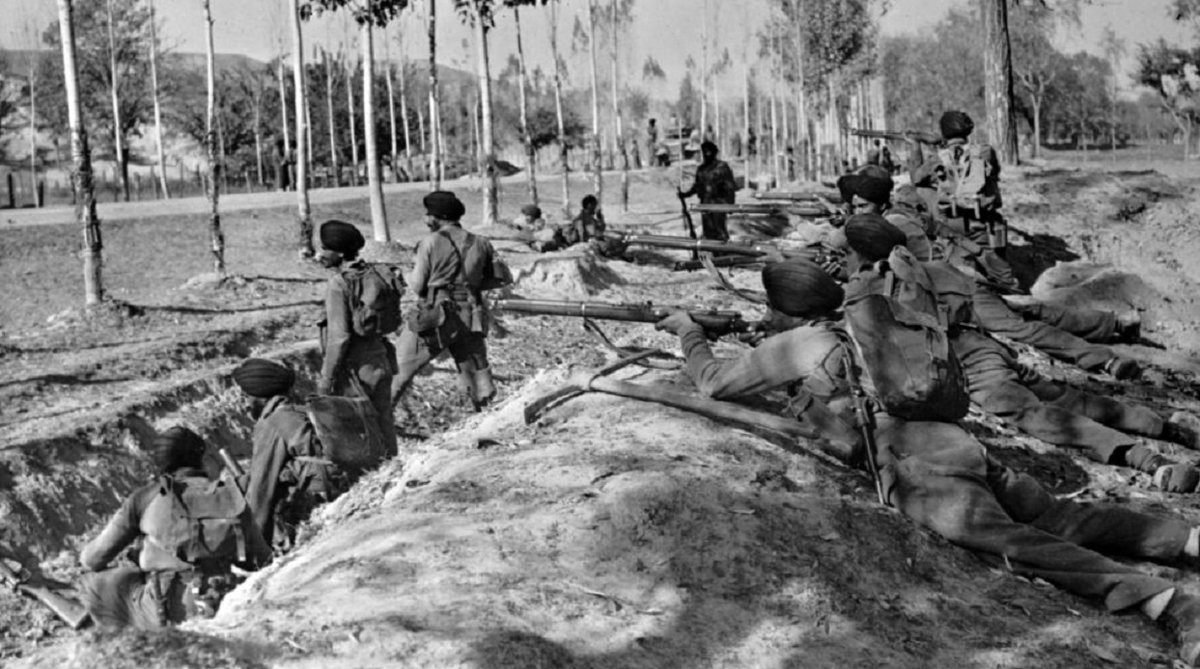 Finally, in late October 1947, the maharajah requested military help from Delhi and signed a declaration to join his mountainous fiefdom with India. The maharajah fled to safety, and Indian troops arrived in Kashmir to seize control. But the chronology of those events remains bitterly disputed.As the two countries dug in on their respective claims in Kashmir, the disputed region was split into a Pakistani-held north and Indian-held south. The "line of control" was to become the front line of the ensuing conflict. The United Nations recommended that India prepare for a referendum that would decide whether Kashmir would join with India or Pakistan, a vote that was never held.
Finally, in late October 1947, the maharajah requested military help from Delhi and signed a declaration to join his mountainous fiefdom with India. The maharajah fled to safety, and Indian troops arrived in Kashmir to seize control. But the chronology of those events remains bitterly disputed.As the two countries dug in on their respective claims in Kashmir, the disputed region was split into a Pakistani-held north and Indian-held south. The "line of control" was to become the front line of the ensuing conflict. The United Nations recommended that India prepare for a referendum that would decide whether Kashmir would join with India or Pakistan, a vote that was never held.
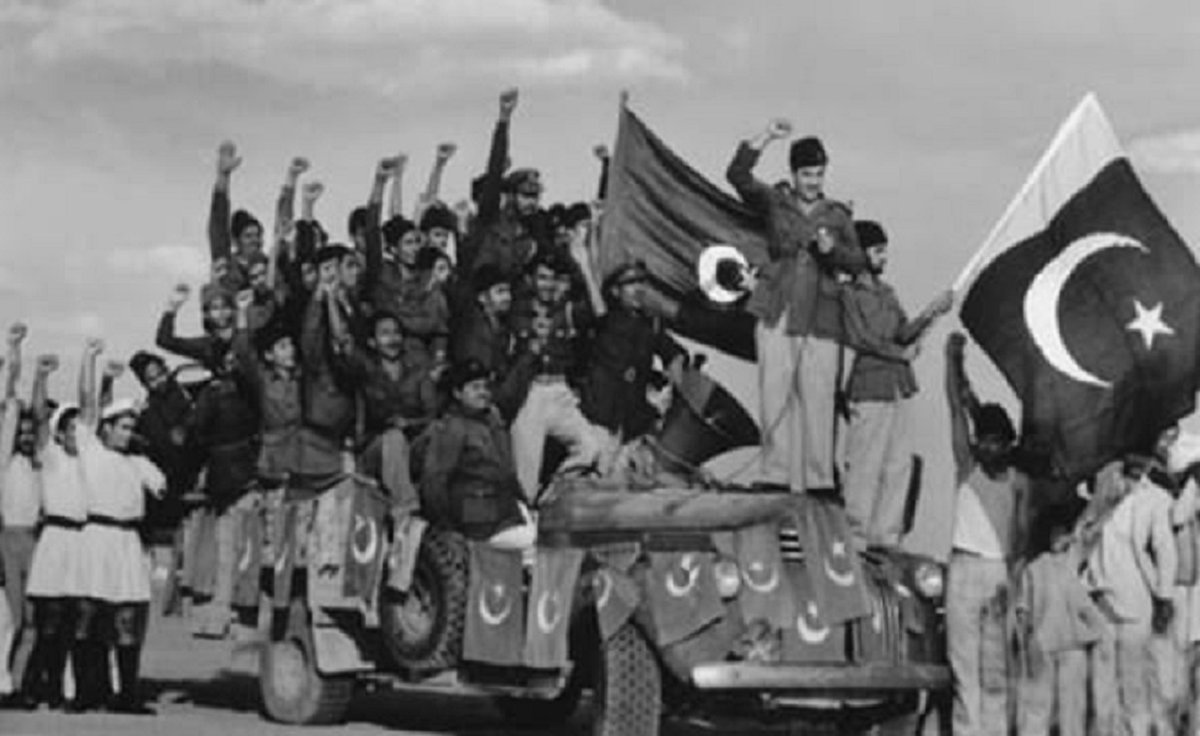 The Indo-Pakistani War of 1947–1948, sometimes known as the First Kashmir War, was fought between India and Pakistan over the princely state of Kashmir and Jammu from 1947 to 1948. It was the first of four Indo-Pakistan Wars fought between the two newly independent nations. Pakistan precipitated the war a few weeks after independence by launching tribal lashkar (militia) from Waziristan, in an effort to secure Kashmir, the future of which hung in the balance. The inconclusive result of the war still affects the geopolitics of both countries.
The Indo-Pakistani War of 1947–1948, sometimes known as the First Kashmir War, was fought between India and Pakistan over the princely state of Kashmir and Jammu from 1947 to 1948. It was the first of four Indo-Pakistan Wars fought between the two newly independent nations. Pakistan precipitated the war a few weeks after independence by launching tribal lashkar (militia) from Waziristan, in an effort to secure Kashmir, the future of which hung in the balance. The inconclusive result of the war still affects the geopolitics of both countries.


